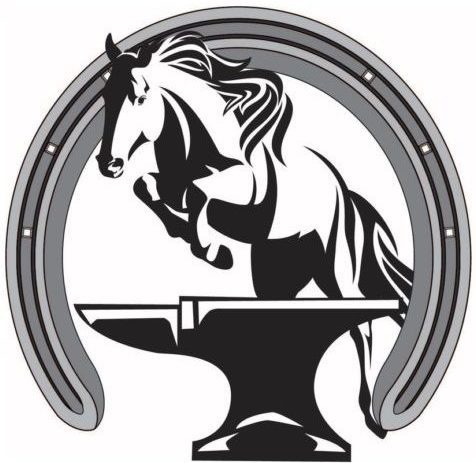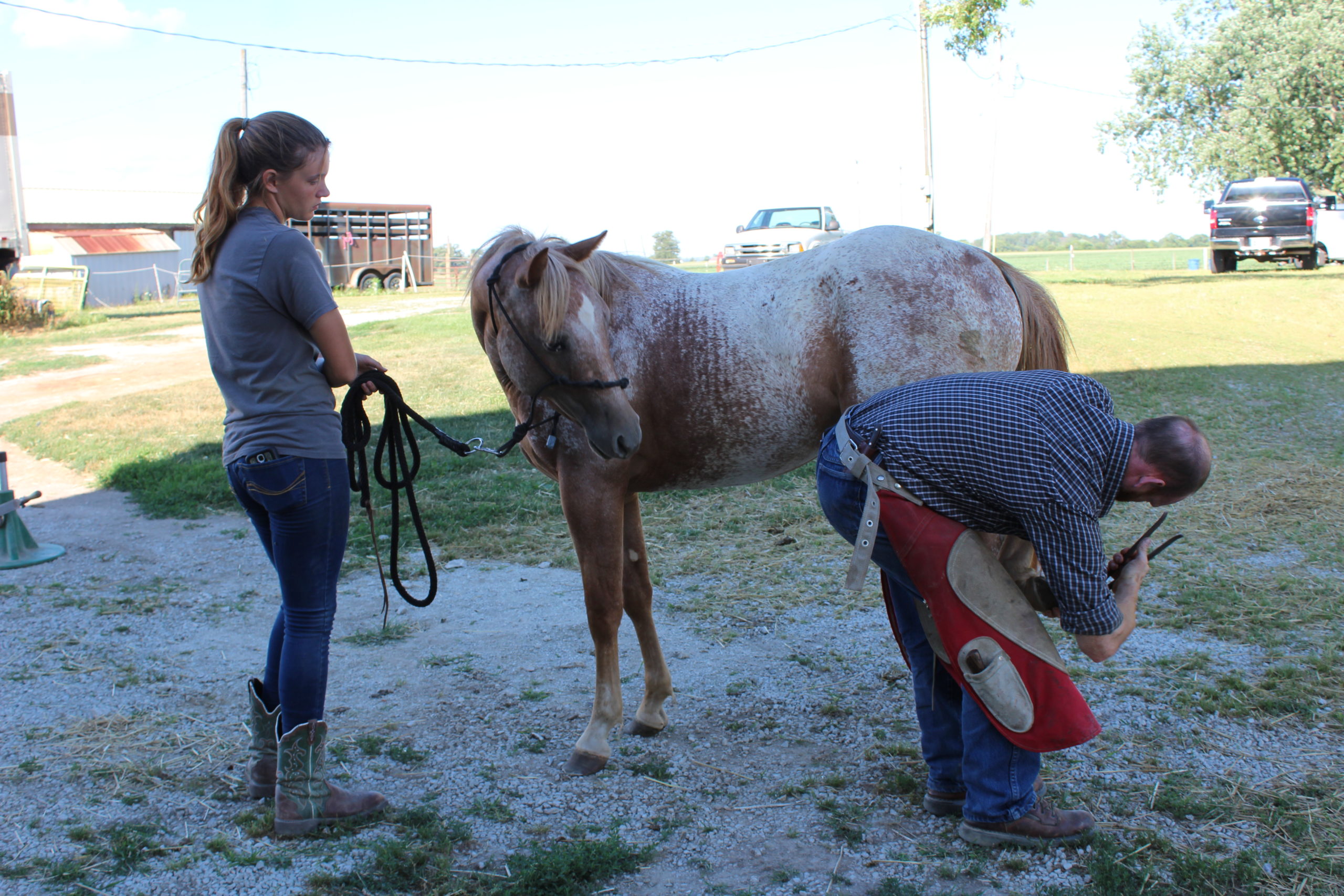As a farrier I am constantly putting my safety in someone else’s hands. Whoever is holding the lead rope of the horse I am working on can significantly affect how a horse stands for me. Unfortunately, horses do not come with owner’s manuals and far too often it is assumed that everyone knows exactly how to hold a horse in a way that will keep themself, the farrier, and the horse safe. While the majority of the horses I work on at this point in my career have little trouble standing well on their own, there will always be a few that need the extra help of an experienced handler.
So how should horses be handled for the farrier? First, it starts well before any appointment. A horse should be properly trained to stand still while having their feet handled before the farrier ever arrives. During the appointment however there are several things you can do to make everyone happier and safer.
- During fly season, be sure to spray your horse down with a good fly repellent so that he is not annoyed and not trying to get rid of flies while needing to stand still on three legs. A fan pointed at the horse can also help with flies.
- Feeding other horses while the farrier is working can be distracting and potentially dangerous. Try to schedule so that horses are not being worked on during feed time.
- Hold your horse in a safe environment. Keep the space that your farrier will be working in free from objects and clutter so that neither you, your horse, or the farrier will get hurt.
- To stay safe and out of the way, stand to the side of your horse’s head, not directly in front of them.
- While holding the lead rope, remember that horses are flight animals. If held too tightly, they will want to get away. Hold the lead rope so there is not constant pressure on the horse.
- When the farrier is working on a front foot, stand on the opposite side of the horse. This will allow the farrier to pull the horse’s leg forward to dress flares or to finish the foot. It will keep you safe too by keeping you out of the way if the horse were to strike out.
- While your farrier is working on a hind leg, stand on the same side of the horse as your farrier. This way, if the horse were to move quickly, he will swing away from the farrier rather than into him or her.
- Don’t allow the horse to nuzzle or lip a farrier’s back. Even a good horse that won’t typically bite may. Especially during the summer, farriers tend to taste like a giant salt block.
- Be sure to appropriately correct or discipline your horse if needed. However, do warn your farrier beforehand.
- Above all relax. Horses feed off of the energy of the people around them. If the handler is uptight then the horse will be too.


